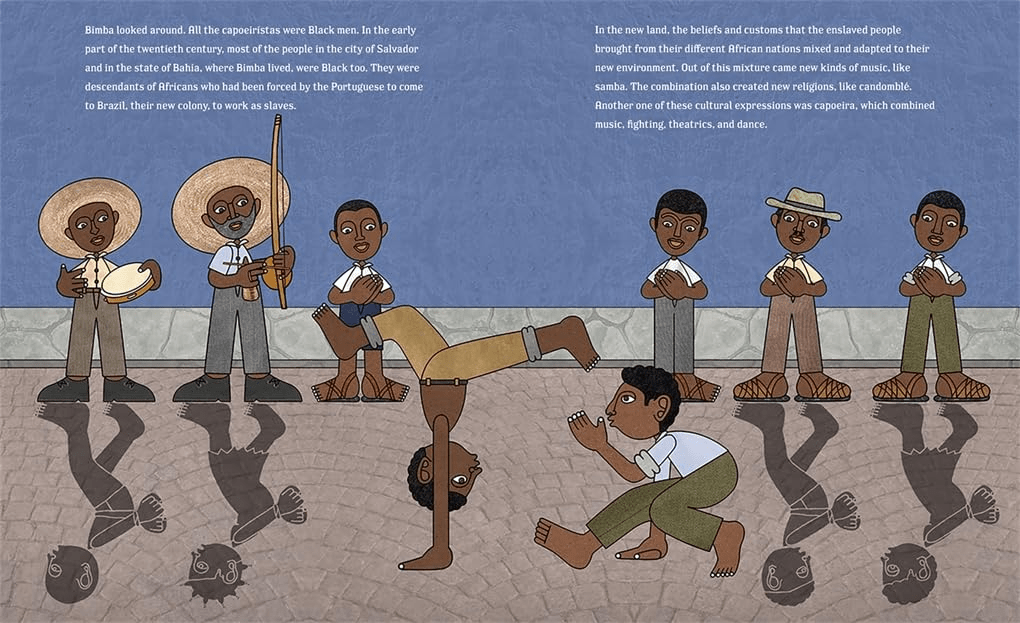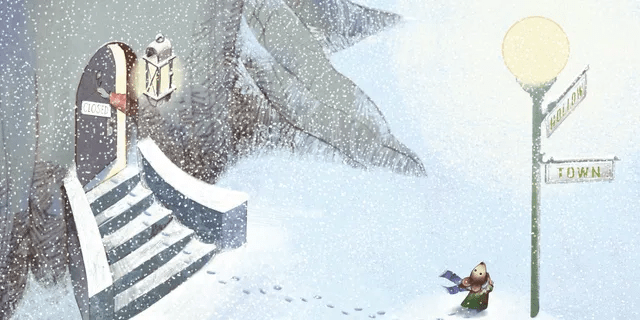Published by Harry N. Abrams
Summary: Manoel dos Reis Machado, a.k.a. Bimba, loved capoeira, a sport involving martial arts-like moves done to musical accompaniment. Involving predominantly Black players, the sport had been banned in Brazil by the all-White government who considered it barbaric. In 1932, Bimba became Mestre Bimba when he opened a school to teach the art of capoeira, introducing a rigor and discipline that eventually made it appealing to a wealthier clientele. It took twenty years of hard work, but in 1953, Mestre Bimba and his students were invited to do a demonstration for the president of Brazil. This removed the last of the discrimination against capoeira, and although Mestre Bimba passed away in 1974, the sport is widely popular throughout Brazil today. Includes a glossary, an author’s note, photos, and a bibliography. 48 pages; grades 3-6.
Pros: Illustrated in Duncan Tonatiuh’s trademark folk-art style, this fascinating biography will have readers heading over to YouTube to see some live demonstrations of capoeira. Tonatiuh has won both the Pura Belpré Award and Robert F. Sibert Medal, and this book could be a contender for both.
Cons: I saw some recommendations for as young as preschool, but I would say this is definitely for upper elementary and middle school kids.
















